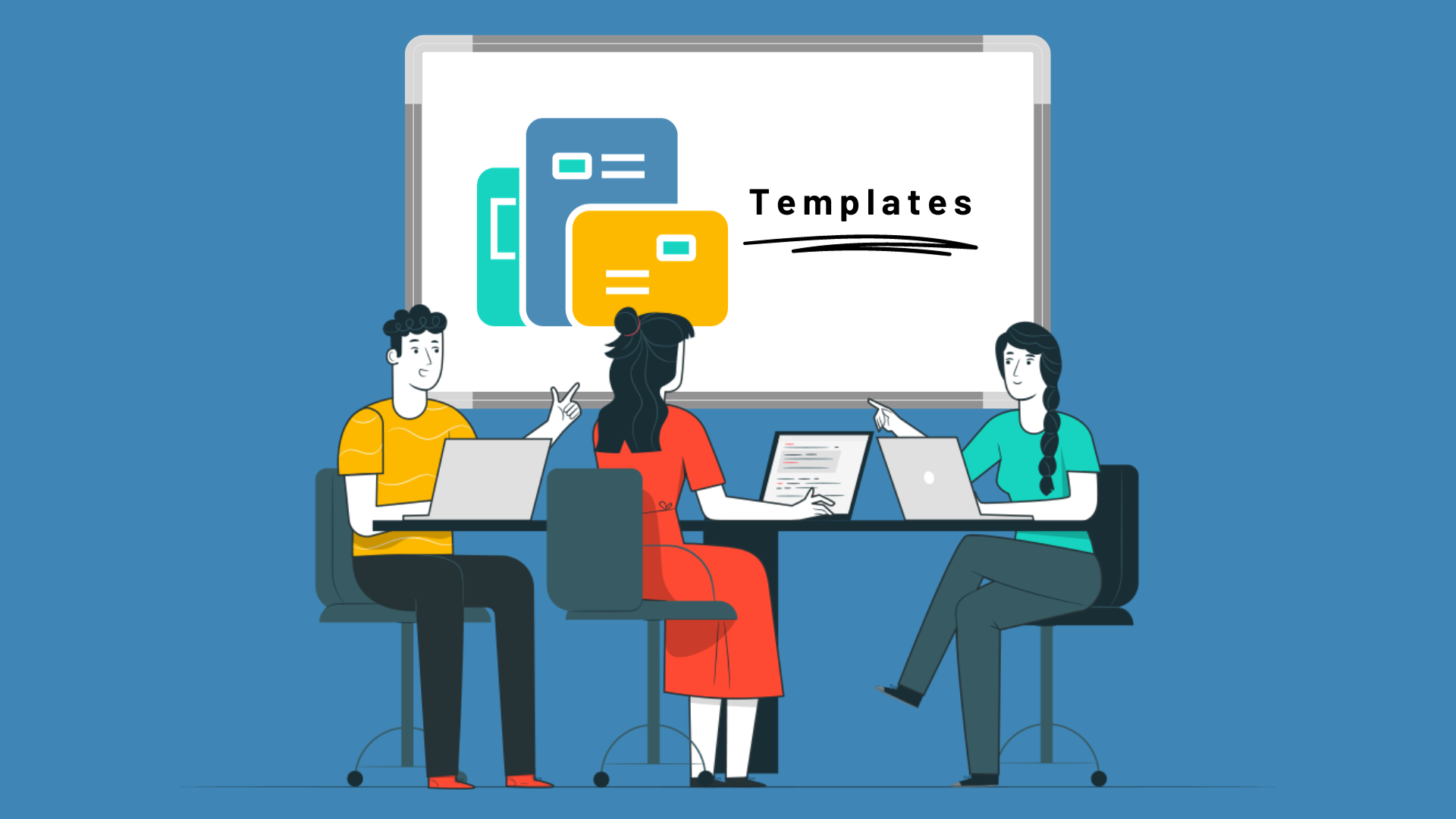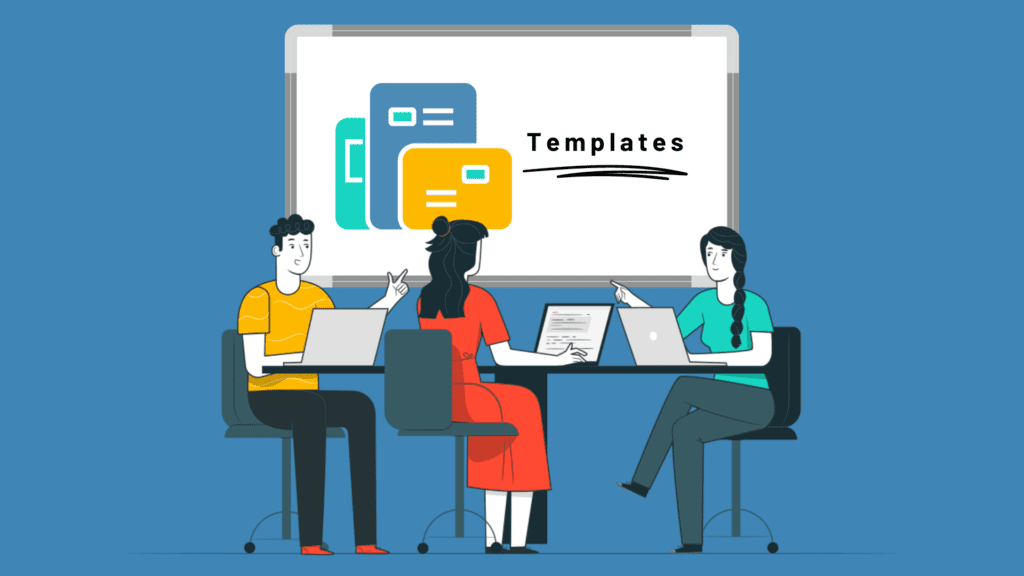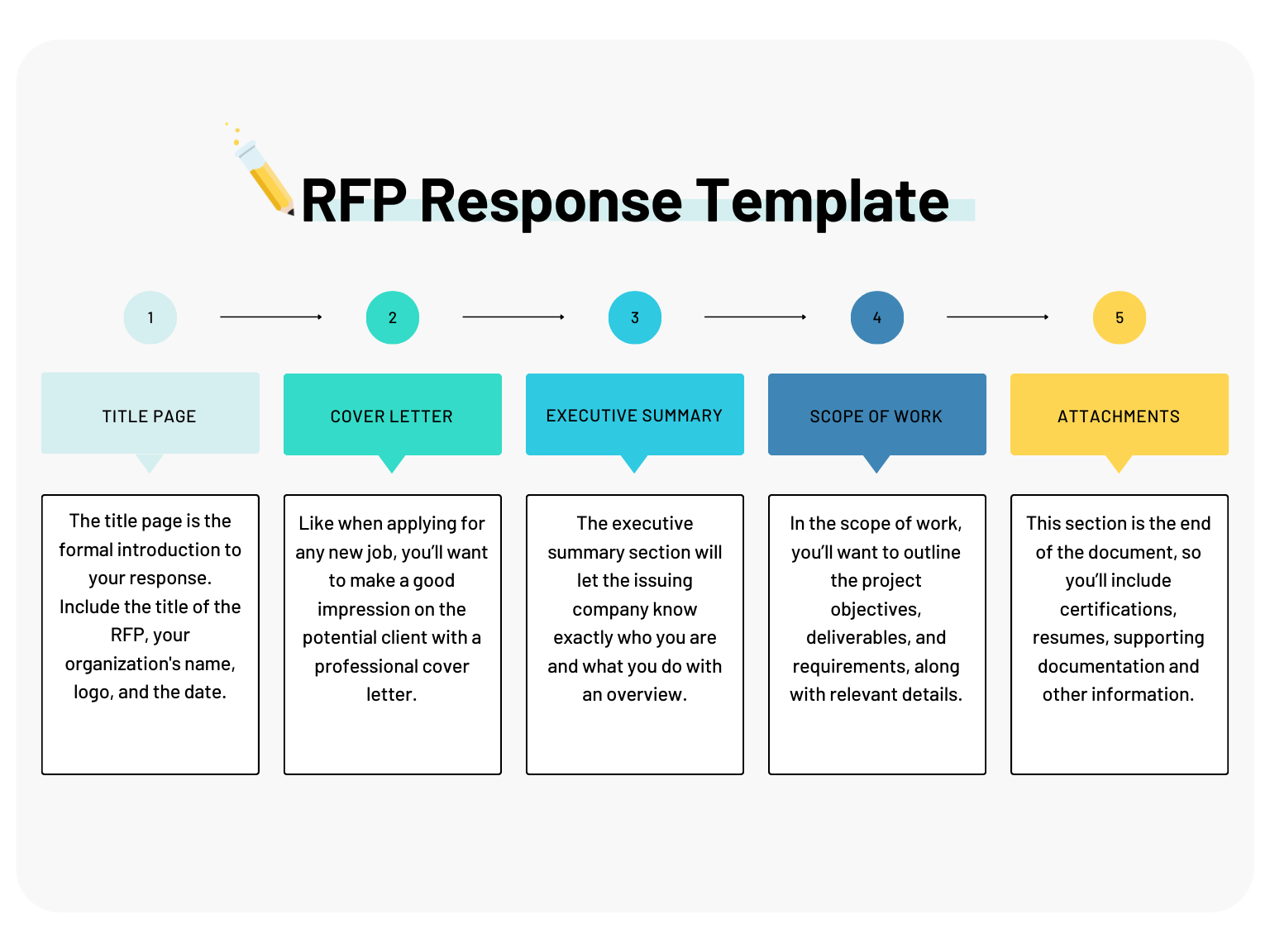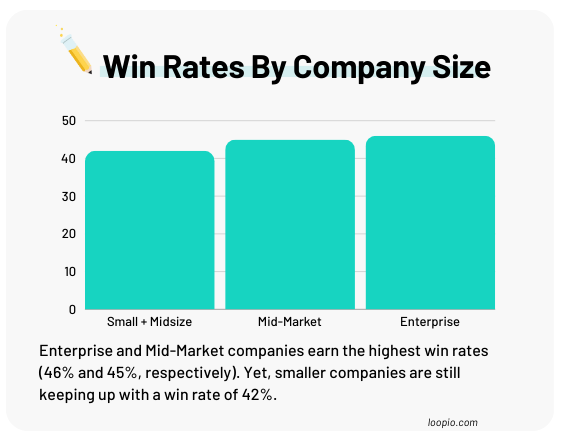How to Build an RFP Response Template


Gathering bid responses for an RFP can be chaotic! Collecting technical information from SMEs, verifying certifications, and having legal teams review terms and conditions are all part of the RFP response process. Without building an RFP response template to help you cross every t and dot every i, you can never be sure everything is included. It’s hard to be 100% confident about your response, even after using those RFP response examples you found online. You’ll often find yourself triple-checking every proposal requirement.
The Bid Lab wants you to feel confident when you develop and submit your proposal response. One way to do that is to better understand how and why a typical RFP response template is formatted. This RFP response example will guide you in creating your own custom RFP response template that’s professional, organized, and more likely to lead to an award.
Similar to how every cake requires its recipe to be followed, but most involve flour, sugar and an oven, every RFP also requires its recipe, which involves a few common sections. We’ve explained a few of these RFP response recipes in the following sections. So, what are the ingredients of an RFP response template?
RFP Response Template

Title Page
A title page is the formal opening document that introduces your response. In high school or college, your title page could cost you points if left off your term paper. The same goes for an RFP title page. Don’t take any chance of leaving the reviewer confused about your bid. Build RFP response templates that make the introduction straightforward to reference for your reviewers. Also:
- Keep it simple. Include the issuing company’s name and related RFP reference information (number and/or name).
- Add your business name, logo, and the date you’re submitting the bid.
- Don’t include marketing lines about your company or product in the bid answers.
- Do create a visually pleasing and simple format. Align the information on the page and ensure your reference information and company name are in an easy-to-read size and font.
Cover Letter
As a good rule of thumb, bids should always include one, even when an RFP doesn’t call for a cover letter or letter of transmittal. For example, when applying for any new job, your company wants to make a good impression on the potential client. Cover letters may be difficult to write at first, but after reviewing a few RFP response examples and writing a few, they’ll become second nature. The objectives are:
- Thank the issuing company for the opportunity to bid on their project.
- Provide a short explanation of who your company is.
- Quickly summarize why your company is qualified to meet the requirements of the RFP.

Although cover letters are not explicitly required in many RFPs, we recommend you include this element when building RFP response templates. Cover letters shouldn’t be overlooked, as they offer an easy way to stand out. So, a cover letter is often the only area of your bid where you can make a first impression by expressing your business’s personality. This is the first opportunity to explain why the project resonates with your organization.
Executive Summary
As you build RFP response templates, you’ll want to include a section introducing your organization and services. The executive summary section will let the issuing company know exactly who you are and what you do. You’ll also include other information about your business and that project. Issuing companies may request information such as:

- Company Background. Prepare a short explanation of who your company is and how it was started. This is a good area to include your mission or value statement. Remember that what you include here should directly relate to the issuing company. If there are common areas where your firms overlap, note that in this section of your RFP response template.
- Organization Chart. Issuing agencies want to know who will manage their project(s) and who they can refer to if/when questions arise. Create a simple organizational chart that includes names, titles and contact information, if applicable.
- Qualifications Table. An agency will likely ask for background information on your organization’s management and potential project staff. At a minimum, information should include a name, title, and a short description outlining their experience with your organization. Include previous experience related to the RFP project. The issuing agency wants to know that your management team is qualified to manage their project through to its completion.
- References and/or Case Studies. Vendor references let the procurement team evaluate feedback about similar projects you’ve previously completed. If you don’t have vendor references to submit, create a summary or case study of a previously completed project. Include information about the scope of work and its outcome. If you were provided a previous RFP response sample, follow that format accordingly.
Scope of Work

A Scope of Work (SOW) is a fundamental piece of a Request for Proposal (RFP) and describes what the company is looking to achieve due to the RFP.
The SOW helps ensure that the product or service meets the company’s needs and establishes what could be included in the resulting contract. It should also contain a timeline detailing milestones, reports, deliverables and/or end products. Simply put, a Scope of Work communicates expectations between you and the client.
So, let’s break down what an RFP Scope of Work looks like into sections. At a minimum, your SOW should contain the following:
RFP Scope of Work (SOW) Glossary: In this section, define any terms or acronyms used in the SOW. Clearly defining company-specific terms helps better explain who you are and what you do, reducing any ambiguity and confusion throughout the SOW.
Problem Statement: Concisely describe the problem that should be solved. Define the current state of the environment and any completed activities to date as part of the project. Be brief but thorough to show the client you understand the problem they are trying to solve and what is needed to provide solutions.
Goals: Detail the project’s end goal. Answer the question, “What’s the point of this RFP?” Be brief and succinct. Keep this to a few sentences or one paragraph in length. This allows the client to gain confidence that you understand the RFP and that you are the best option to help them achieve their desired solution.
Deliverables in the RFP Scope of Work: This section should outline each deliverable’s project deliverables and associated tasks. Use plenty of detail here so both parties understand what to do and who’s responsible. Outline deliverables with an easy-to-read table. This will help the client understand what will be done, when and by whom.
Communication Plan: Outline any meetings, calls or reviews in this section of the SOW. SOWs should include regular check-ins or status updates to ensure the project is progressing. This assures the client that you will communicate regularly and work with them to complete the project satisfactorily.
Timeline: This section lays out all the project dates. It should also cover due dates for deliverables and incorporate any dates relating to the Communication Plan. Therefore, tables are helpful in this section to show a clear timeline for the project’s duration and ensure everyone’s expectations are met.
Avoid the main problem that plagues Scopes of Work: lack of specificity. A well-thought-out SOW tells the issuer that you evaluated the RFP in detail. In short, it conveys confidence in your ability to meet their needs.
Attachments and/or Appendix
Finally, don’t forget to build RFP response templates with attachment sections. An attachment section works as an appendix to your RFP response. This section ends your document, so you’ll include certifications, resumes, supporting documentation to respond to answers, and many other information. A rule of thumb is to use this final section to attach anything relevant to your response, even if it’s not required in the RFP.

How to Design a Winning Response
Understand the Basics of Proposal Bidding
Government agencies, public institutions and private businesses often need outside support for a project or service. For these issuing entities, RFPs offer an efficient path to identifying, evaluating and procuring solutions from an outside company — like yours.
For example, if a city agency needs its website updated or redesigned, it may publish an RFP outlining its revamped needs and budget specifications. Oftentimes, they’ll invite web design firms to submit a proposal (or “bid”) for the project.
There are digital tools you can use to find out about these open-call opportunities. You can even use keywords and other sophisticated search methods to find the most relevant ones. Further, social media can also help find bids. Many social feeds — like ours, @thebidlab — share RFP announcements, webinars on proposal-related topics and other helpful information. We even share weekly featured bids every Friday that can help keep you updated on strategic RFP opportunities. Or try out Bid Banana, The Bid Labs’ own searchable RFP database. We pull RFPs from all over, so you don’t have to. By cultivating a list of available RFPs all in one place, Bid Banana can help you find the perfect RFP to grow your business.
The bottom line is that the RFP process is designed to illuminate new ideas and approaches for companies looking to grow. Issuing entities utilizing an RFP know where they want to go but seek someone to help them. Making your company the one who navigates them can be a very lucrative endeavor.
Step Up Your Search Game
To find the perfect RFP opportunity to pioneer your (hopefully) newfound interest in proposal bidding, it’s important to cast a wide net. We mentioned search and social media strategies above. However, there are also curated databases that compile thousands of RFP opportunities into a centralized location. These allow you to browse possibilities quickly and efficiently.
Admittedly, many of these tools require a membership or have a paid-for component. Yet, many of them also offer benefits such as free trial periods, helpful search criteria to assist in narrowing your results and automatic notifications about opportunities based on specified keywords. Some databases don’t require payment (such as GovernmentContracts.us or BidNet Direct). And, with some, you can conveniently break down search results into distinct industry categories like graphic design, building materials, data management and many more.

Another way to make the search process less arduous is to tap into the array of tools Google offers within its platform. For example, you can narrow your search to easy-to-access PDF files by adding “filetype:pdf” to your search string in the Google search bar. You can also use time-based filters to return only recently posted results.
If you want to expand your ability to search and identify these RFP opportunities in larger numbers than your team can currently manage, consider partnering with an outside expert. We provide Bid Banana for those who want to search for RFPs independently. But if you want a more fine-tuned approach, teams like The Bid Lab can help. Working with an RFP professional will allow you to provide high-level reviews while delegating the time-consuming work of reading through the fine print and searching databases. Investing early in high-quality leads can translate a wider RFP net into a winning business proposition.
Stand Out to Start Winning RFPs
Once you’ve identified a proposal opportunity your team is well-suited for, it’s time to start strategizing. Ensure your proposal reflects your team’s full capabilities in a package that’s clear, compelling and unique. At The Bid Lab, we host a Learning Center that offers everything from detailed cover letter advice to designing effective pricing strategies that can help demystify the RFP process from start to finish.
When creating your proposal, take the time to focus on its structural format and visual appearance. Speaking from experience, a beautifully designed RFP tells the reviewer that you put thought and effort into your proposal. An attractive bid helps engage your prospective client and elevate your proposal above the competition.
Remember, user-experience-based design isn’t only for websites. Successful proposals consider how the reader will consume the document and add design elements accordingly to promote readability and comprehension. This translates to effectively anticipating potential evaluators’ pain points.
Put yourself in the shoes of someone reading your bid. Imagine going through a big pile of plain, black-and-white proposal responses and finding one with great content, a splash of color, and persuasive imagery. Standing out with an eye-catching design template will not win a bid, but it may be the final push you need to get your company to the top of the win list.
Leverage Technology Appropriately
Automated RFP tools almost always promise to empower in-house employees to complete RFPs faster than Google or Microsoft-based tools. In our experience, while bid software can be incredibly helpful as a timesaver, even the most intelligent systems need a person to drive proposals most of the way to the finish line. A hybrid approach that blends Artificial Intelligence (AI) time-saving tools with expert-driven, detailed responsiveness is the best path forward — more Ironman and less Robocop!
Intuitive advancements in proposal templates make inputting a prewritten response more seamless. However, the RFP language is still too divergent for software to identify the correct input. So, while pre-written responses can save time and money when used strategically, it’s best practice to custom-tailor every response through a personal review.
Additionally, automatic tracking of metrics, key performance indicators (KPIs) and other data relevant to your industry and company is essential to keep your bids up-to-date with the latest information for winning business. But again, make sure your RFP process combines technology with a personal touch to guarantee successful results.
Don’t Stop, Keep Winning Business

With the previous four steps in mind, any company can create meaningful efficiencies and identify strategic opportunities in their RFP-driven approach to winning business. It won’t happen overnight, but getting the fundamentals right will deliver results.
But what happens next once you submit or mail a winning bid for an RFP? First, carefully review your proposal bidding and the original RFP document. Consider designating an internal negotiation team to communicate with your major stakeholders. Also, a checklist of negotiation ranges and non-negotiables should be developed. This could include a timeline from your manufacturing team or your finance department’s lowest possible price range.
Address Areas of Uncertainty
If any areas of uncertainty remain, now’s the time to address them. Communicate as much as possible with your new client and secure specific, written agreements about the project’s scope, reporting requirements, and deliverables. This is vital to preventing ‘scope creep’ later in the process. A forward-looking organization doesn’t rest on its laurels. From the start of a new contract, task a part of your team with identifying opportunities for additional engagements. And speaking of growth, now’s also the time to start thinking about your next bid. The good news is that once you’ve gone through the RFP process successfully, you can begin building a portfolio of content that will help simplify future proposals. And, in doing so, you’ll be poised to take your business to the next level of transformation.
You Don’t Have to Design a Winning Response Alone
Now that we’ve discussed the ingredients of an RFP response template, we’re ready to help with the fine print. Worried about stale language in your RFP response? Start by learning how to build a content portfolio that will simplify your RFP responses. Take a look at everything in our Learning Center, and check out our case studies to see how we’ve helped clients just like you. At The Bid Lab, our procurement experts have landed many lucrative bids by writing exciting, professional, and fresh proposals. And guess what? We can also help you find your next RFP opportunity via our user-friendly RFP search engine, Bid Banana. So, reach out for a free consultation by calling 1-844-4BIDLAB or emailing respond@thebidlab.com.
